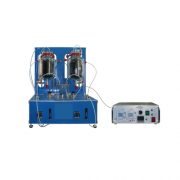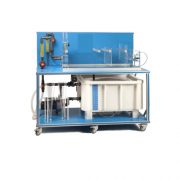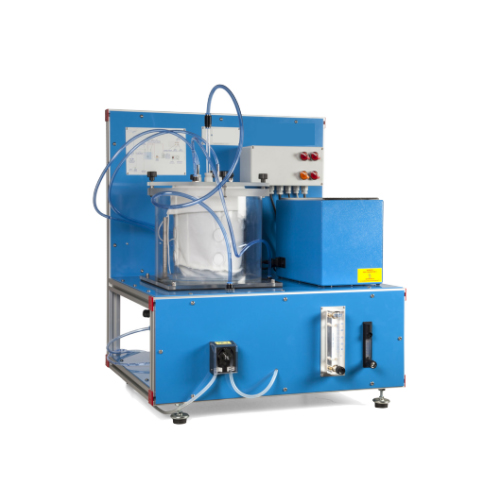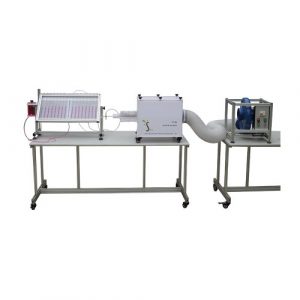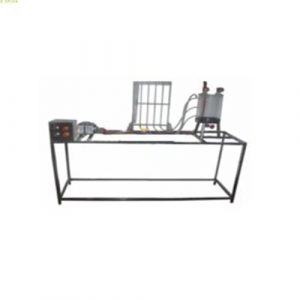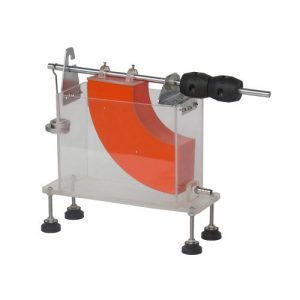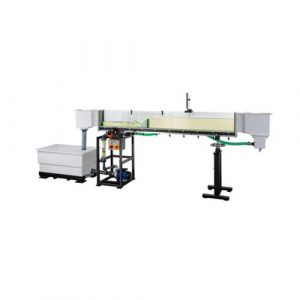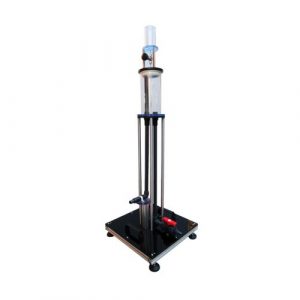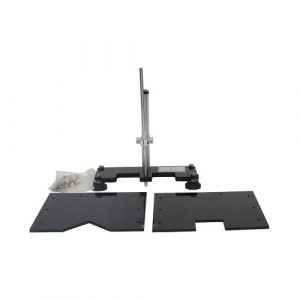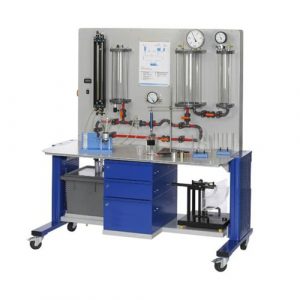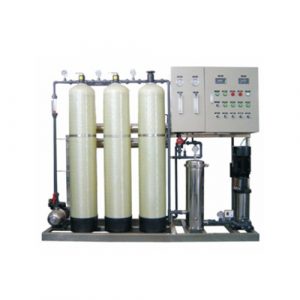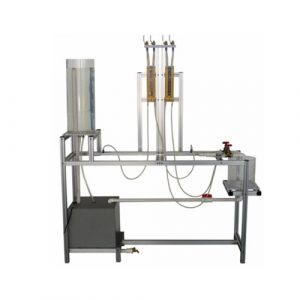- Description
- Inquiry
TB221018S08 Aerobic Digester Teaching Equipment Hydrodynamics Laboratory equipment
INTRODUCTION
The first step to which residual water is subjected when entering a Sewage Farm is a pretreatment. Big solids, sand and grease are removed.
Next, water undergoes the so-called primary treatment. Easily settled suspended solids and part of the organic matter are removed.The rest of organic matter, dissolved and suspended, and the rest of solid particles that have not been removed in previous treatments are removed by the so-called “Aerobic Wastewater Treatment Biological Processes”, which is the secondary treatment of the water line.
The “Aerobic Wastewater Treatment Biological Processes” can be defined as those processes carried out by a specific group of microorganisms that in presence of oxygen act on the dissolved, suspended and colloid organic and inorganic matter existing in wastewater.
They transform that matter into gases and cells that can be easily separated by settling.
GENERAL DESCRIPTION
The objective of the Aerobic Digester is to study and understand aerobic digestion processes and to analyze their main parameters.
The unit consists of a 20 l capacity reactor vessel with a tubular membrane made of plastic inside to separate the sludge. Wastewater to be treated enters the vessels pumped by a peristaltic pump.
This unit includes a thermostatic bath to heat water up to 60 ºC. That water is driven by a pump through a coil inside the reactor. A suitable temperature for the microorganisms population employed in the aerobic digestion will be obtained.
The greater amount of oxygen available in the environment in the aerobic digestion, the quicker the bacteria involved in the process will grow. Therefore, a compressor introduces a specific air flow into the reactor through a diffusion plate.
The aerobic reactor includes a portable temperature, pH and dissolved oxygen meter to monitor the digestion
SPECIFICATIONS
Bench-top unit.
Anodized aluminum frame and panels made of painted steel.
Main metallic elements made of stainless steel.
Diagram in the front panel with distribution of the elements similar to the real one.
20 l reactor vessel with a tubular membrane inside.
Lid for the reactor with a manual valve and the respective holes.
Heating or cooling coil.
Thermostatic bath (up to 60 ºC ), 6 l capacity, 600 W.
Pump for hot water circulation of the thermostatic bath.
Air compressor, range: 0 – 5 l/min.
Diffusion plate for the air inlet.
Air flow meter, range: 0.4 – 5 l/min.
Peristaltic pump, range: 0 – 0.05 l/min.
Water flow meter, range: 0.004 – 0.05 l/min.
Membrane, muds separation.
Overflow for the outlet of filtered water.
Valve on the bottom for mud extraction.
Temperature, pH and dissolved oxygen meter to monitor the digestion.
Control panel, including:
Switch for pump for the hot water circulation.
Switch for peristaltic pump.
Switch for air compressor.
Main switch.
Cables and Accessories, for normal operation.
Manuals: This unit is supplied with the following manuals: Required Services, Assembly and Installation, Starting-up, Safety, Maintenance & Practices Manuals.
– Dimensions: 800 x 600 x 700 mm approx.
(31.50 x 23.62 x 27.56 inches approx.)
– Weight: 55 Kg approx.
(121 pounds approx.).
EXERCISES AND PRACTICAL POSSIBILITIES
1.- Acclimation of biological samples.
2.- Study of the temperature effect on the effluent quality.
3.- Study of the detention time effect on the effluent quality.
4.- Study of the aireation effect on the effluent quality.
5.- Study of the pH effect on the effluent quality.
6.- Study of the mass load effect on the effluent quality.
7.- Study of the nutrients effect on the effluent quality.
8.- Study of the recirculation effect on the effluent quality.
9.- Establishing the stoichiometry of aerobic processes.
10.-Establishing the kinetics of aerobic processes.
11.-Gas/liquid mass transfer.
12.-Residence time distributions.
13.-Measurement of MLSS and COD changes as criteria of performance.



